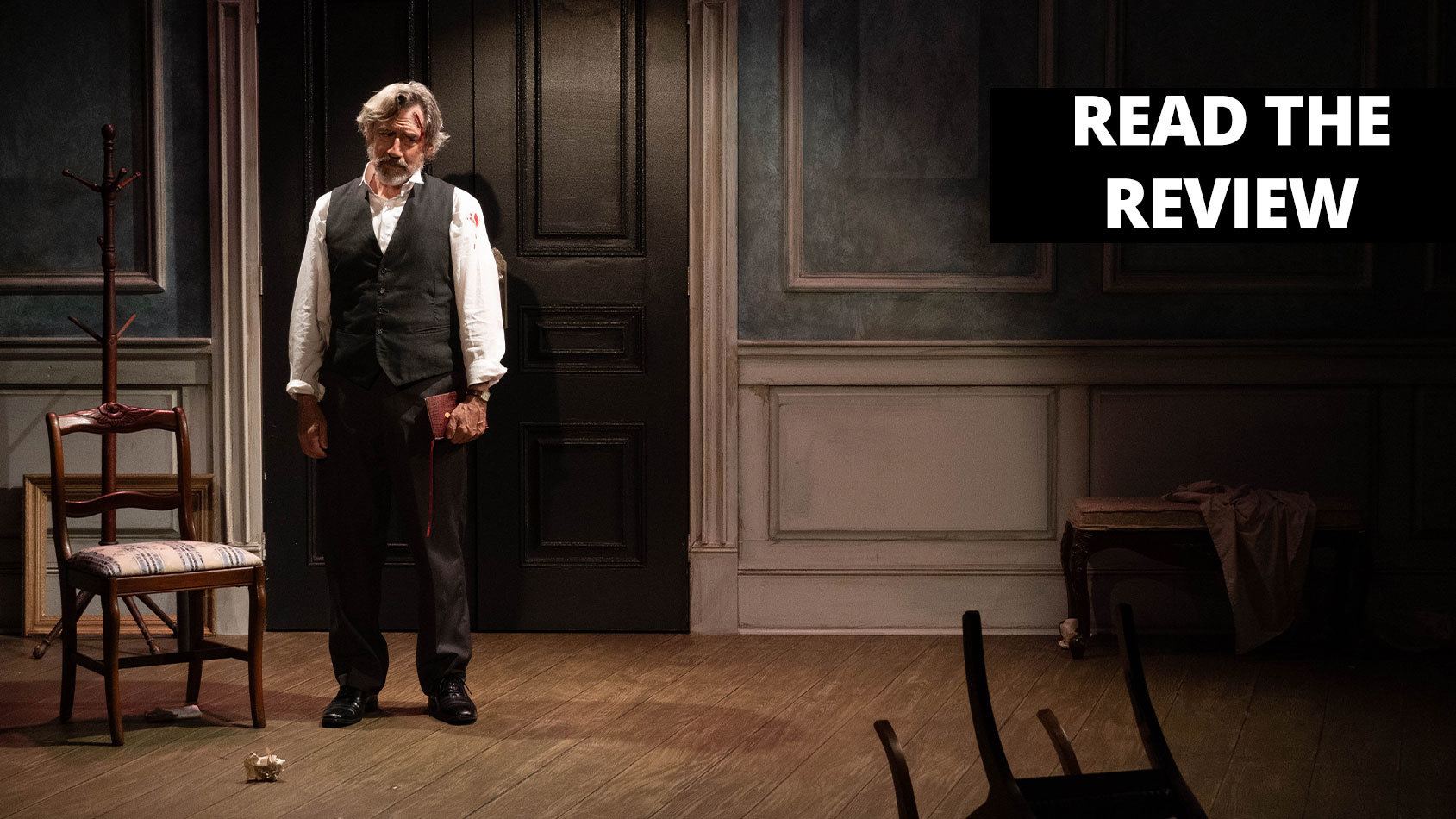Review by Edward Kliszus
The notion of crafting a sequel in 2017 set in 1894, based on Henrik Ibsen’s 1879 work A Doll’s House, with anachronistic verbal colloquialisms is fascinating. Anne Marie (Viki Boyle) first employs a few prime contemporary expletives when conversing with Nora (Suzanne O’Donnell). Perhaps Knath is seeking a partitive tension not available if the language and comportment of characters in Part 2 fit too nicely in 1894 society.
Ibsen raised questions that stunned the tidy bourgeois establishment of his day. He challenged conventional customs on how women should behave, their roles as mothers and wives, and scrutinized disparities of men’s and women’s rights. Even today, we recall just a generation ago how married women could not open a credit card account or apply for a loan without their husband’s imprimatur.
But Lucas Hnath’s A Doll’s House – Part 2, is not a missive on women’s rights, even though the closing song played is Helen Reddy’s I Am Woman. Instead, it’s an exploration of the complexity of human emotions, discrete frailty, dreams, ambitions, freedom, and needs emanating from the configuration of the nuclear family, in this instance, with three children and no dog. We sympathize with the characters, drawing perhaps on individual experiences (audience responses were a clue) and thinking, “yes, I’ve felt that,” or “yes, that hurts” or, “I wish she didn’t do or say that,” or “what about the children?”
Fifteen years ago, Nora abruptly left her husband Torvald (David Breitbarth) and their three young children. Over time, theories surfaced around town about where she may have gone. Some thought that perhaps Nora was ill and confined to a sanitarium, while others theorized that she died there. Torvald avoided discussing her disappearance, and when neighbors and colleagues assumed she died, he validated the notion by not disputing it.
We view a 19th-century living room in Nora and Torvald’s house in the first scene. It’s a bit worn with just a few pieces of furniture and shadows where pictures once hung. The children are grown and living elsewhere, and nanny Ann Marie remains to assist Torvald with household routines. After insistent knocking on the door, Anne Marie opens it. Nora strolls in, dressed in finery, indicating a person of means. We learn that she left to seek her destiny and freedom from the constrictions of motherhood and marriage. As Hnath’s imagination conceived, she became a famous author hiding within a pseudonym. Her central theme, not surprisingly, is how marriage is a prison of submission and regret and a legal contract to ruin romance and invoke the male breadwinner’s parsimonious management and condescension. She penned how a woman escaped it all to attain sumptuousness, importune lovers, and relish her solitude. This sounds strangely like a biography. Nora’s return starts a chain of events educing sadness, intrigue, laughter, mayhem, wisdom, and kindness. Nora’s daughter Emmy (Aishling Pembroke), an independent, secure young woman, is recruited by Nora and Ann Marie to convince Torvald to fulfill a promise he made the day Nora left.
An electronic rhythmic and melodic soundscape of varying intensity was interspersed throughout the production. On the wall was projected the incoming character of significance. Lighting was clever and refined, costuming was elegant, and the intimate environment in the black box theatre tradition amplified intimacy, purpose, and design. Hats off to Director Chris Cavelli, Costume Designer Jacquelyn Loy, Scenic Designer Bert Scott, Sound Designer Katie Lowe, Lighting Designer Todd O. Wren, and Assistant Stage Manager Naomi Bates.
The characters are complex, engaging, and lovable, thanks to the work of our cast. When Torvald is injured after a scuffle with the local clerk and returns home after wandering the streets with a bloody head wound, the level of sympathy is palpable. We also hope he still loves Nora despite removing her pictures and belongings after her departure. After all, he never remarried, and his interactions with prodigal Nora fit the “old married couple” aphorism.
When Emmy, the youngest of the three children, meets her mother for the first time, we agonize, imagining the range of emotions she must feel – rejection, guilt, abandonment, unloved. We held our breath as she spoke with confidence, perhaps smiling through tears, explaining how she grew up more vital because of the loss of her mother.
Ann Marie is the personification of sacrifice, staying in the home to raise three children belonging to another woman. And Nora, naughty perhaps, independent, but also vulnerable and endearing. It’s a relief that her children seem to have fared well, assuming Emmy is the example. We can’t help but adore Nora and worry about what might happen to her. She admitted she’d aged a bit when Ann Marie spoke about her knees and insides not working like they used to.
The four-member cast carried the 90-minute production beautifully, masterfully maintaining their respective roles, engaging the heart and imagination, and taking us with them as they traveled effortlessly in an inventive dreamscape through time. They expressed and shared emotions that touched the audience participant, guiding us through the tensions of heartache, loss, and desires. They reminded us to love, pursue our passions, ask questions, and realize that some things shall not work out as planned.
The packed house and standing ovation were well-earned.
To view the digital touchless playbill, click here or go to
https://issuu.com/floridareptheatre/docs/a_dolls_house_p2_2022-touchless_playbill
A Doll’s House – Part 2 runs through March 27,
For tickets, click here, call (239) 332-4488 or go to https://tickets.floridarep.org/.
Parking is free, so come early to enjoy the wonderful restaurants that abound in this beautiful waterfront downtown area.
The Florida Rep Theatre is conveniently located at 2268 Bay Street Fort Myers, FL 33901

